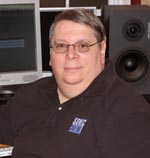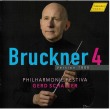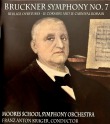Bruckner and Film Orchestration (A Lecture Series)
For scores and musical examples, the course makes use of the publications and music available on abruckner.com via its Download Section. A Demo of one lesson is available HERE via YouTube. Click the cog wheel at the bottom-right of the YouTube player to set playback to 720p. Then set player to full screen mode for the optimum experience. Below is Mr. Alexander's brief explanation of the video lectures: Back in 1863, a composer named Francois Auguste Gevaert wrote an orchestration book that surpassed Berlioz. You don't hear that too much, but it's true. The material covered also pre-dated Rimsky-Korsakov by decades in describing orchestral color combinations. In 1885, Gevaert revised this work. Part of Gevaert's teaching was a concept I've defined as Span of Orchestration which divides the orchestra into 5 parts starting from the lowest pitch to the highest. The five parts are sub bass, low, medium, high, and very high (the 1863 edition divided the orchestra into 3-parts, low, medium and high). Gevaert's book affected all the major composers including the Russians (translated by Tchaikovsky) and the Germans (translated by Hugo Riemann). Essentially, what Gevaert taught from an orchestral position is practical counterpoint applied to the orchestra! In Los Angeles, where I worked for many years, span of orchestration was most often called registration. Those who practiced it (Miklos Rozsa, Jerry Goldsmith, John Williams, Henry Mancini, Elmer Bernstein, etc) were all taught this technique of orchestral composition privately through such people as Mario Castelnuevo-Tedesco in Los Angeles, and for those after World War II who took their GI Bill and studied in Paris, Nadia Boulanger and others. What results is clarity of orchestration. You can hear it clearly with Jerry Goldsmith's "The Attack" from The Blue Max (view on YouTube). The same quality is utterly evident with Bruckner. (Page 1 Symphony #6. Violins and later violas are in the upper register, the cellos and basses in octaves in the lower register leaving a huge space for the French horn "to speak" without competition.) With over 12 examples (reduced from 32) I'm doing 12 mini-video lectures. On completion of each lecture, the learner is expected to, at minimum, model Bruckner by writing an original 30-60 second piece which they must then record and produce in their MIDI studios. More advanced learners are expected to condense the score to concert key, do what's called a MIDI mock-up of it, then model it for an original work. In this way, they also gain recording experience. I'll be giving those who buy this series ($29.95 - see below) timings for the MP3s so they can then match the excerpt to the recording and hear it. What I'm covering here is not taught in the standard college orchestration class. For more information and to order the lecture series, Click here. | ||||||









